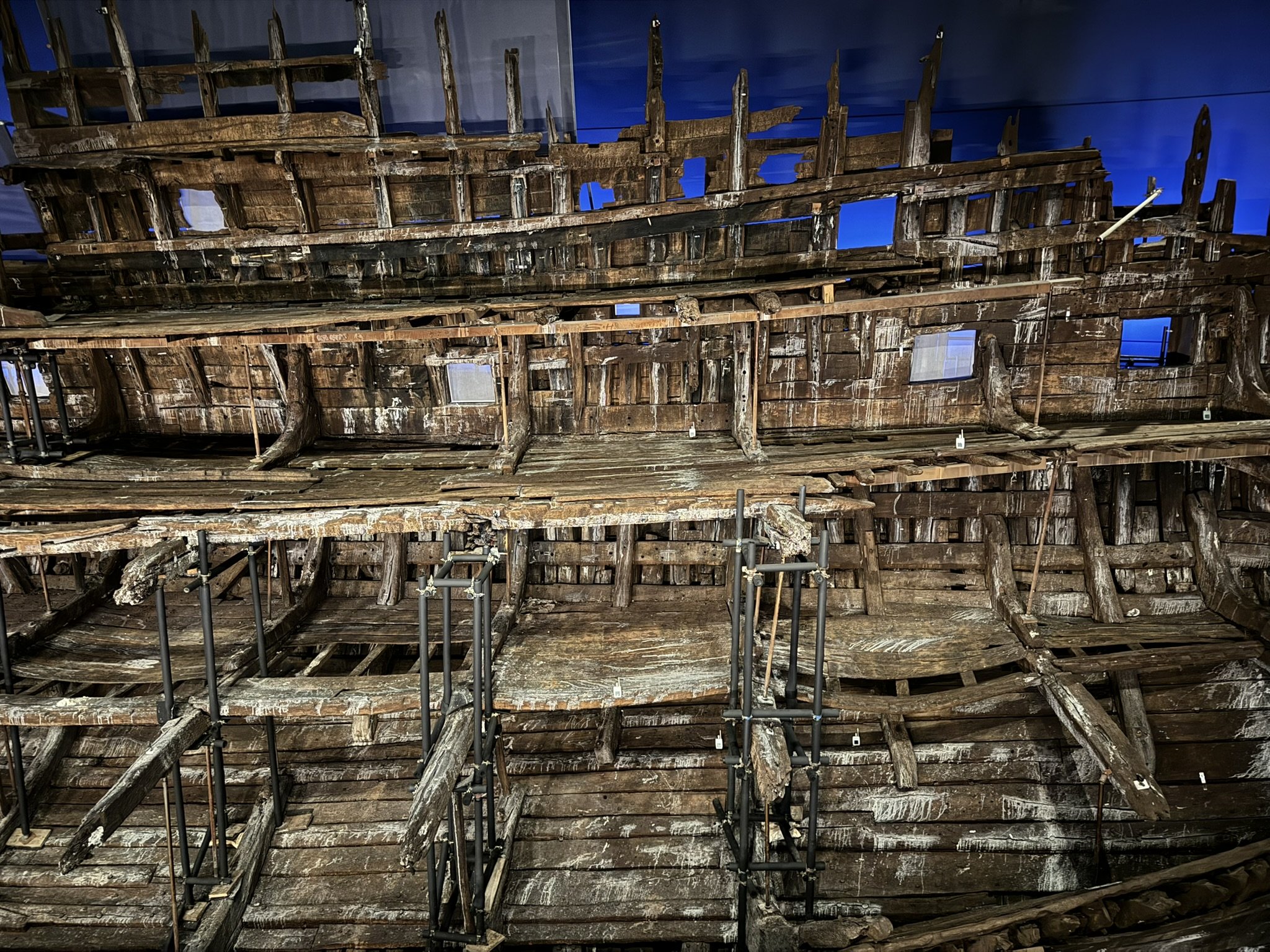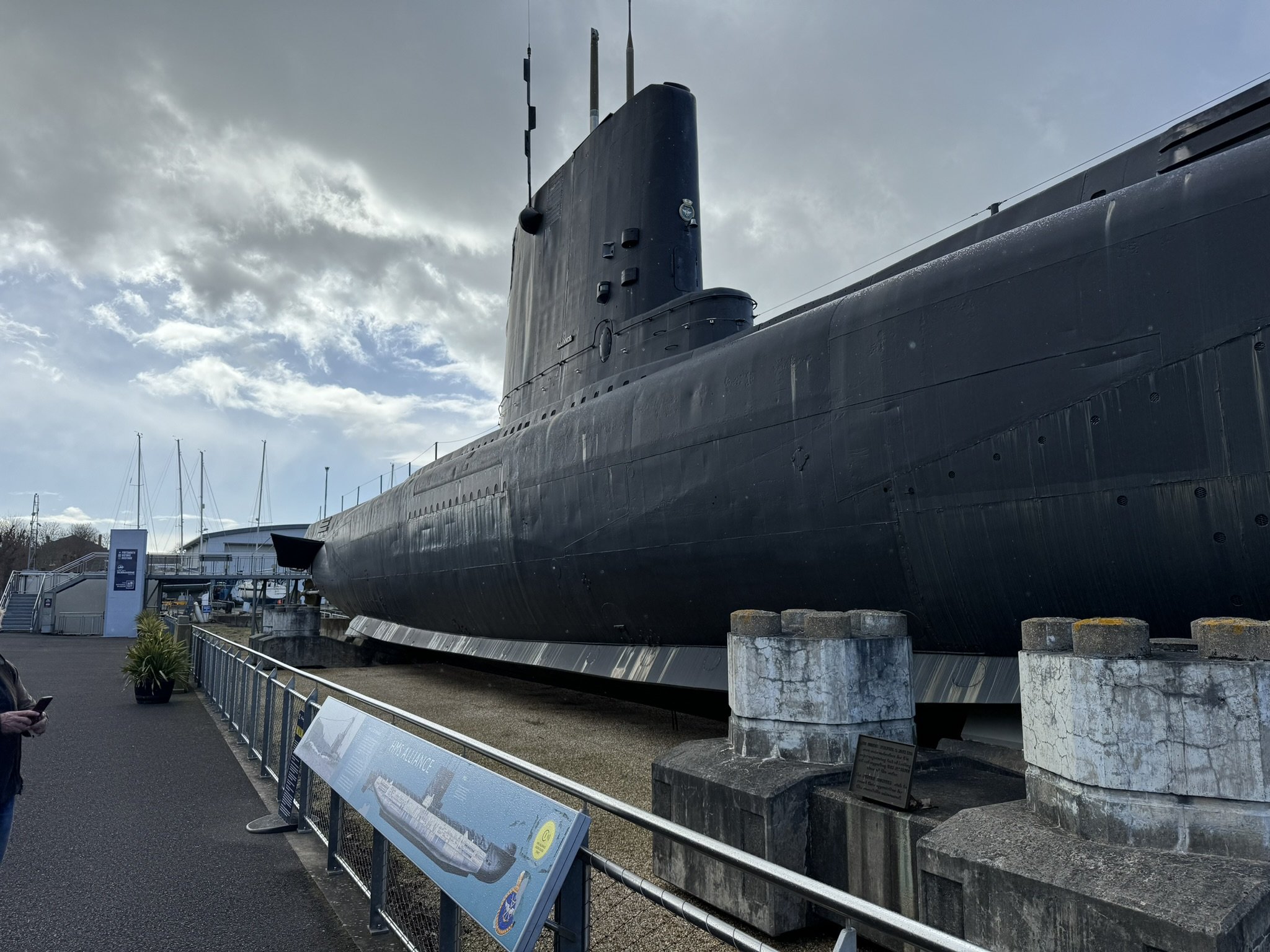The Mary Rose & The Historic Portsmouth Naval Yard
Portsmouth is a storied place in the history of the British Royal Navy. The city is in many ways a navy town, similar to San Diego but without the nice weather and with a much longer history as place for warships. The city is located next to the Solent, a large natural harbor that boarders the English Channel.
On my train ride into Portsmouth, I was advised by some local residents that the Historic Naval Yard is challenging to see in a single day. They were right. It took me a day and a half to see most of the attractions. The Naval Yard isn’t a single museum, but rather a series of museums connected on land and by boat. A single ticket can be purchased to see everything and is good for a year of return visits.
HMS Warrior
HMS Warrior
The Warrior is a sailing ship unlike any I’ve toured before. The ship was built before the American Civil War and was therefore between the age of sail and the ironclads that gave way to the battleships of the 20th century. Warrior is a sailing steamship, where giant boilers provide propulsion along with the more traditional sails. It retains the broadside cannons of the past, with capstans below decks for much of the heavy lifting, swords stored above the cannons for hand-to-hand combat, and multiple magazines. The ship is massive and has been beautifully restored and maintained. Interestingly, the ship never saw combat. The closest it ever came was when it was stationed along the American coastline during the American Civil War, ready to intervene if the needed cotton imports to England were ever threatened.
The Mary Rose
The Mary Rose
This ship deserves more than I can write here, as it has its own incredible history. The ship is from the time of Henry the VIII, and was built in the 1500’s. During a battle with the French in the Solent, the ship was sunk with all but three men escaping. To prevent boarders, they had strung netting across the deck which kept the sailors trapped inside. The ship was slowly lost to history until recreational SCUBA diving became popular in the 1960’s. Amateur marine archeologists searched for the ship before finding the remains in the sand and mud. Slowly, and very carefully, a single side of the ship was excavated and brought to the surface. From there, the ship underwent an intense preservation process to stabilize the wood.
The result is a museum that showcases the ship and many of the thousands of artifacts discovered in the recovery. Human skeletal remains were also recovered and are on display, along with anthropologic studies conducted with modern genetics. An archer was discovered near his many bows and showed signs of stronger arms. Other crew members are also on display, along with the genetic analysis that tells us as much as can be known about their ancestry. The ship was a surprisingly diverse place.
If you have a chance to visit this museum, I highly recommend it. This was one of the best naval museums I have been to and left me thinking a lot more about this period of history.
The Submarine Museum
The Submarine Museum
The Submarine Museum is a short hop on a boat directly across the harbor. The museum is next to the oldest, still active British naval base. The museum is unmistakable with a round top and, more noticeably, a large diesel submarine on blocks out in front. This museum was one of the last diesel submarines. Guided tours are available and the guide for my group served as a sonar operator on the boat. Other artifacts include a mini sub used for special operations during WWII and the oldest submarine in the history of the Royal Navy. This submarine is an incredible sight to see, both from the outside and in.


